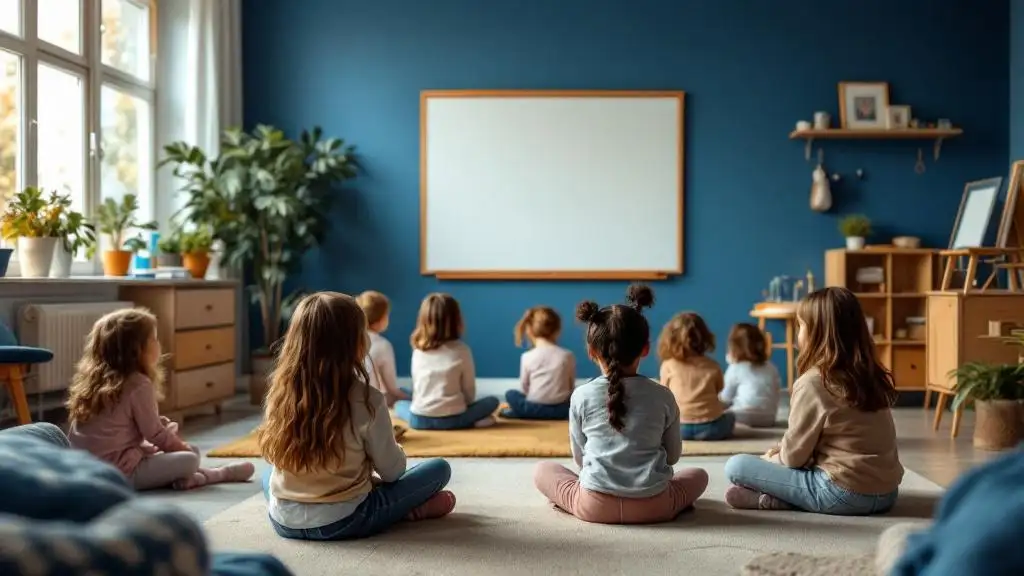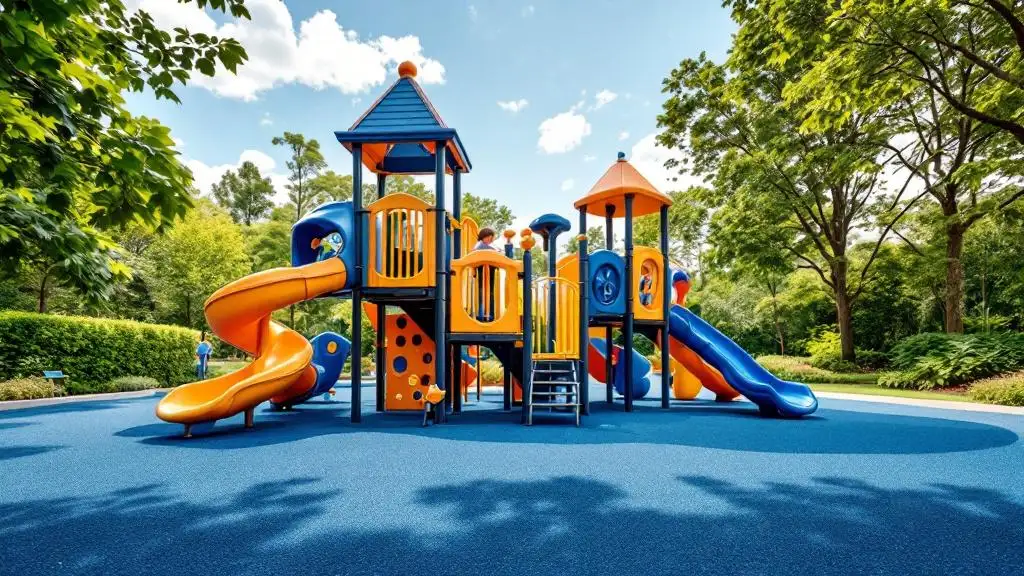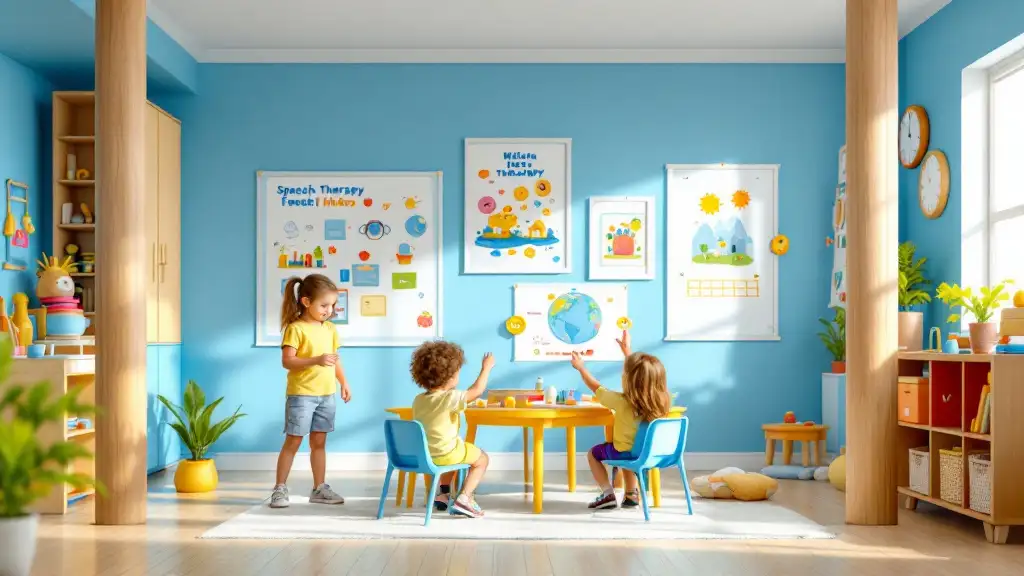
Understanding Speech Perception in Noisy Environments
Listening comprehension in noisy environments presents significant challenges, especially for individuals with hearing impairments or auditory processing difficulties. Speech therapy offers evidence-based strategies and interventions designed to strengthen auditory skills, improve speech perception, and facilitate better communication amid background noise. This article explores various techniques, interventions, and environmental modifications that can be employed through speech therapy to optimize listening skills in challenging acoustic conditions.
Core Techniques in Speech Therapy to Improve Listening in Noise

What are effective speech therapy techniques for improving listening comprehension in noisy environments?
Improving speech perception in noisy settings is a complex challenge that involves enhancing both physical auditory processing and cognitive functions. Speech therapy employs a variety of methods tailored to strengthen these skills.
One foundational approach involves targeted auditory training exercises. These exercises focus on refining pitch discrimination, such as differentiating the fundamental frequency (F0) and identifying harmonic mistuning. These training activities help the brain better separate and identify speech sounds in complex noise conditions.
Phoneme differentiation exercises are also pivotal. They train individuals to distinguish similar phonetic sounds, which is vital for understanding speech quickly and accurately amid background noise. Temporal processing activities improve sequencing and resolution, allowing listeners to better parse rapid changes and timing cues in speech.
Another significant method is speech-in-noise training (SINT). This approach involves exposing learners gradually to speech signals masked with varying levels and types of background noise. Through repeated practice, individuals learn to filter out irrelevant sounds and focus on the speech, leading to desensitization to noise and improved comprehension.
Multisensory strategies greatly enhance speech perception outcomes. Utilizing visual cues, such as lip movements and facial expressions, alongside auditory input provides additional context and aids decoding. Tactile cues can also be incorporated for individuals with specific needs, reinforcing speech signals and aiding memory.
Environmental modifications support training efforts. Strategic seating—such as facing the speaker and positioning away from noise sources—creates a more favorable listening environment. The use of assistive technology, including hearing aids with advanced noise reduction or FM systems that transmit clear speech signals directly to the device, substantially helps in challenging settings.
Combining these physical, perceptual, and cognitive techniques within a personalized therapy plan offers the best chance for meaningful improvement. Such a comprehensive approach can help individuals better understand speech amidst noise, enhancing communication, academic success, and social interactions.
Technological and Environmental Interventions to Support Listening
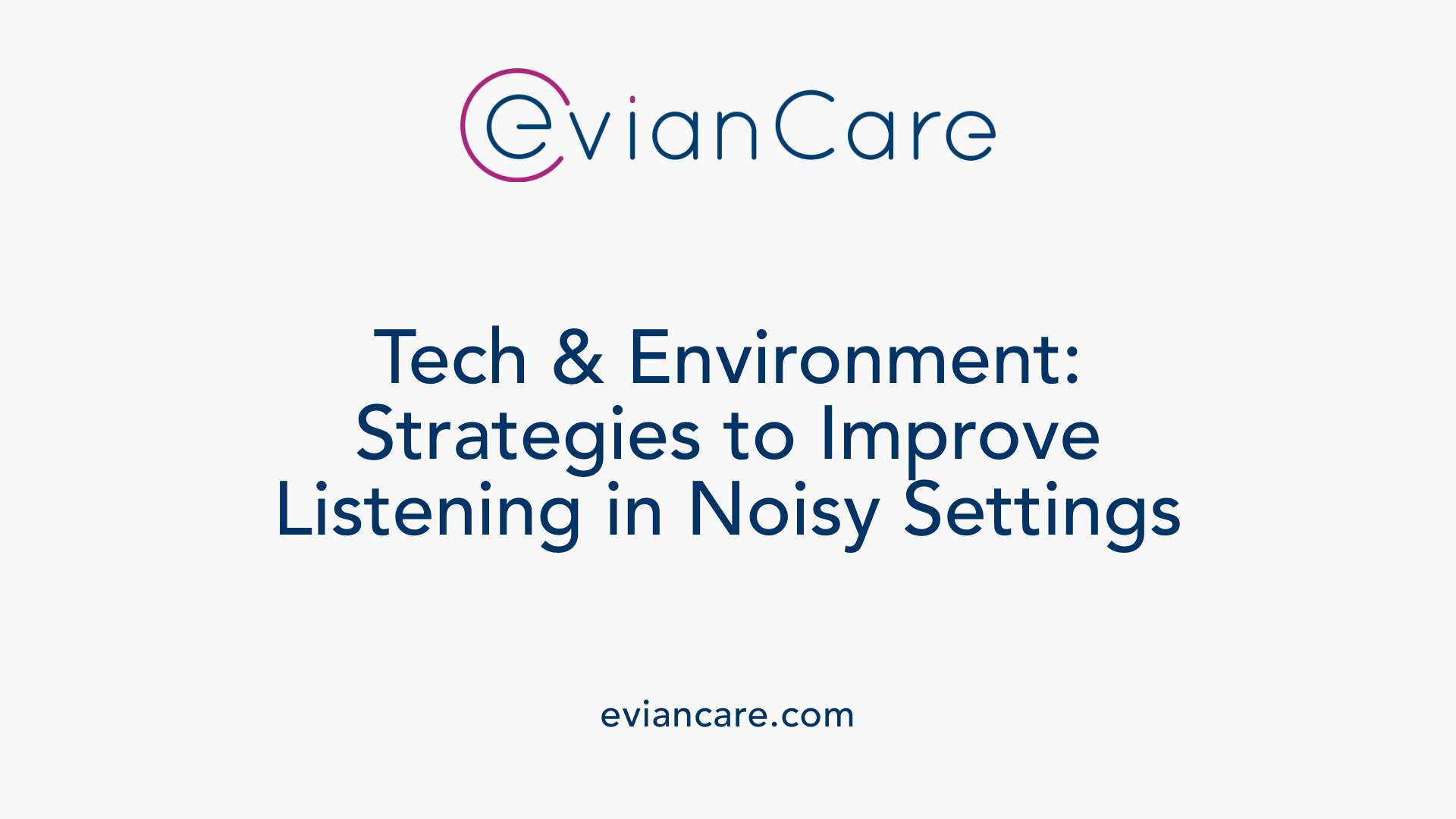
What strategies can be used to enhance speech perception in noisy settings?
Improving speech understanding in noisy environments involves a mix of advanced technology and environmental adjustments. One of the most effective approaches is the use of hearing aids equipped with noise reduction features and directional microphones. These devices can amplify desired sounds like speech while minimizing background noise, making conversations clearer and easier to follow.
Assistive listening devices (ALDs), such as FM systems and Bluetooth remote microphones, also play a critical role. These devices transmit sound directly to a user's hearing device or cochlear implant, significantly reducing the impact of ambient noise. For example, in a classroom, a teacher can wear a microphone that sends their voice directly to students' devices, enhancing clarity.
Environmental modifications are equally important. Strategic room setup, such as optimal seating arrangements close to the speaker, helps improve access to sound. Reducing background noise from fans, appliances, or other sources creates a more acoustically friendly space. Additionally, improving room acoustics with sound-absorbing materials can decrease echo and reverberation, supporting better speech comprehension.
Combining these technological aids with environmental strategies can dramatically improve speech perception in complex auditory environments. For example, adjusting seating in a classroom while providing students with assistive listening devices enables children with hearing difficulties to better focus on the teacher's voice.
Research shows that auditory training programs, which include bottom-up methods like pitch, spatial, temporal, and phonemic training, alongside top-down cognitive exercises, also enhance the brain’s ability to process speech in noisy settings. This multifaceted approach leverages neural plasticity to compensate for deficits and improve everyday communication.
Music training has been identified as another beneficial intervention, as it improves pitch discrimination and neural coding of speech cues. Such training, combined with targeted listening exercises—like practice in noisy conditions—can equip individuals with better skills to filter background sounds and focus on key speech signals.
In summary, combining technological solutions, environmental modifications, and auditory training programs creates a comprehensive support system that enhances speech perception among individuals facing noise challenges. These strategies are essential for educational settings, workplaces, and social interactions, ensuring effective communication despite challenging auditory conditions.
Auditory and Cognitive Training Approaches
Can cognitive training focusing on memory, attention, and executive functions improve speech perception in noise?
Yes, cognitive training targeting memory, attention, and executive functions can significantly enhance speech perception in noisy environments. These programs help strengthen the brain's ability to process and interpret sounds, reducing listening effort. Improving working memory allows individuals to better retain and manipulate auditory information, while focused attention training helps in filtering relevant speech from background noise. Executive function exercises enhance overall cognitive control, enabling more effective listening and comprehension.
Research shows that cognitive training can lead to measurable improvements in auditory processing and listening skills. These improvements are especially beneficial for children with developmental challenges or adults experiencing age-related cognitive decline. When combined with auditory-specific training, cognitive exercises support a comprehensive approach to tackling the difficulties of speech perception in complex acoustic environments.
How does music training influence both bottom-up and top-down components?
Music training impacts both the physical and mental aspects of auditory processing. On the bottom-up side, it enhances neural coding of pitch, rhythm, and intensity, sharpening auditory discrimination and timing. This improved sensory processing helps in decoding speech sounds amidst background noise.
On the top-down side, music training fosters attention, working memory, and emotional regulation. Musicians often demonstrate superior attention to detail and better cognitive flexibility, which aid in understanding speech under challenging conditions. This dual influence makes music training an effective method for improving overall speech perception in noise.
What are effective speech-in-noise training programs that use background noise?
Speech-in-noise training programs are designed to simulate real-world listening situations by incorporating background noise with speech stimuli. These programs typically involve listening exercises where participants are tasked with understanding sentences or words masked by different types of noise, gradually increasing in difficulty.
Such programs train the brain to segregate speech from noise, improving neural filtering and decoding abilities. They often include activities like speechreading, asking for repetitions, and strategic listening, which can be done in both clinical and classroom settings.
An example includes auditory training modules that expose children and adults to speech tasks with competing sounds, helping them adapt and improve their resilience to noisy environments. These training methods have shown promising results in enhancing listening comprehension and reducing listening effort.
Evidence-based approaches and tools
Several evidence-based methods support improvements in auditory and receptive language skills in noisy settings:
- Auditory training programs focusing on speech differentiation and localization.
- Use of hearing assistive devices like FM and Bluetooth systems that amplify speech signals.
- Environmental modifications such as strategic seating and sound absorption.
- Personalized device programming with audiologists to optimize noise reduction.
- Structured listening exercises that gradually increase noise levels, as demonstrated in recent studies involving children.
Together, these approaches form a comprehensive strategy for addressing the challenges of speech perception in noise, facilitating better communication, especially for individuals with hearing loss or language development difficulties.
Supporting visual and environmental strategies
In addition to auditory and cognitive training, utilizing visual cues like lip-reading and clear gestures, along with environment adjustments—such as reducing background chatter, choosing quiet seating, and ensuring good lighting—can further improve understanding in noisy situations. Combining these tactics with technological aids creates a supportive setting for effective communication.
The Role of Music and Neural Mechanisms in Speech Perception

How does music training affect bottom-up and top-down components of speech perception?
Music training influences both the initial auditory processing pathways and higher cognitive functions involved in understanding speech. Bottom-up mechanisms, such as pitch discrimination and harmonic recognition, are strengthened through musical exercises that improve the brain's ability to decode fundamental frequencies (F0) and harmonics. This enables individuals to better distinguish speech sounds, especially in noisy environments.
At the same time, music training enhances top-down processing by improving attention, auditory memory, and cognitive flexibility. These skills are crucial for processing speech contextually and managing complex listening situations. Therefore, engaging in music-based activities can lead to more effective integration of sensory inputs and cognitive understanding, resulting in improved speech perception in noisy settings.
What neural mechanisms are involved in speech perception in noise?
Speech perception relies on a variety of neural mechanisms including pitch perception, neural coding of temporal and intensity cues, and various cognitive functions. Pitch perception allows listeners to identify speakers and segregate sounds, which is essential in crowded environments. The brain encodes temporal cues—timing differences and sequencing—while intensity cues help differentiate speech from background noise.
Neural coding involves the precise synchronization of auditory nerve signals with sound stimuli, enabling accurate decoding of speech. Cognitive functions such as working memory, attention, and executive control support the interpretation and comprehension of speech, especially when auditory signals are degraded or masked by noise.
How can defects in neural mechanisms be addressed through training?
Disruptions in these neural processes can impair speech perception, but targeted training programs can help restore or compensate for these deficiencies. For instance, pitch training exercises focusing on F0 differentiation and harmonic mistuning improve neural pitch coding abilities.
Localization training, emphasizing cues like interaural time difference (ITD) and interaural level difference (ILD), enhances spatial hearing skills. Temporal processing exercises can boost sequencing and resolution, directly impacting speech clarity.
Combined phonemic training improves phonetic differentiation, while cognitive training enhances working memory and attention—core supports for processing speech in noise. Engaging these training modalities can remap neural pathways, reduce perceptual difficulty, and ultimately improve speech understanding even in challenging auditory environments.
Assessment, Therapy Modalities, and Environmental Strategies
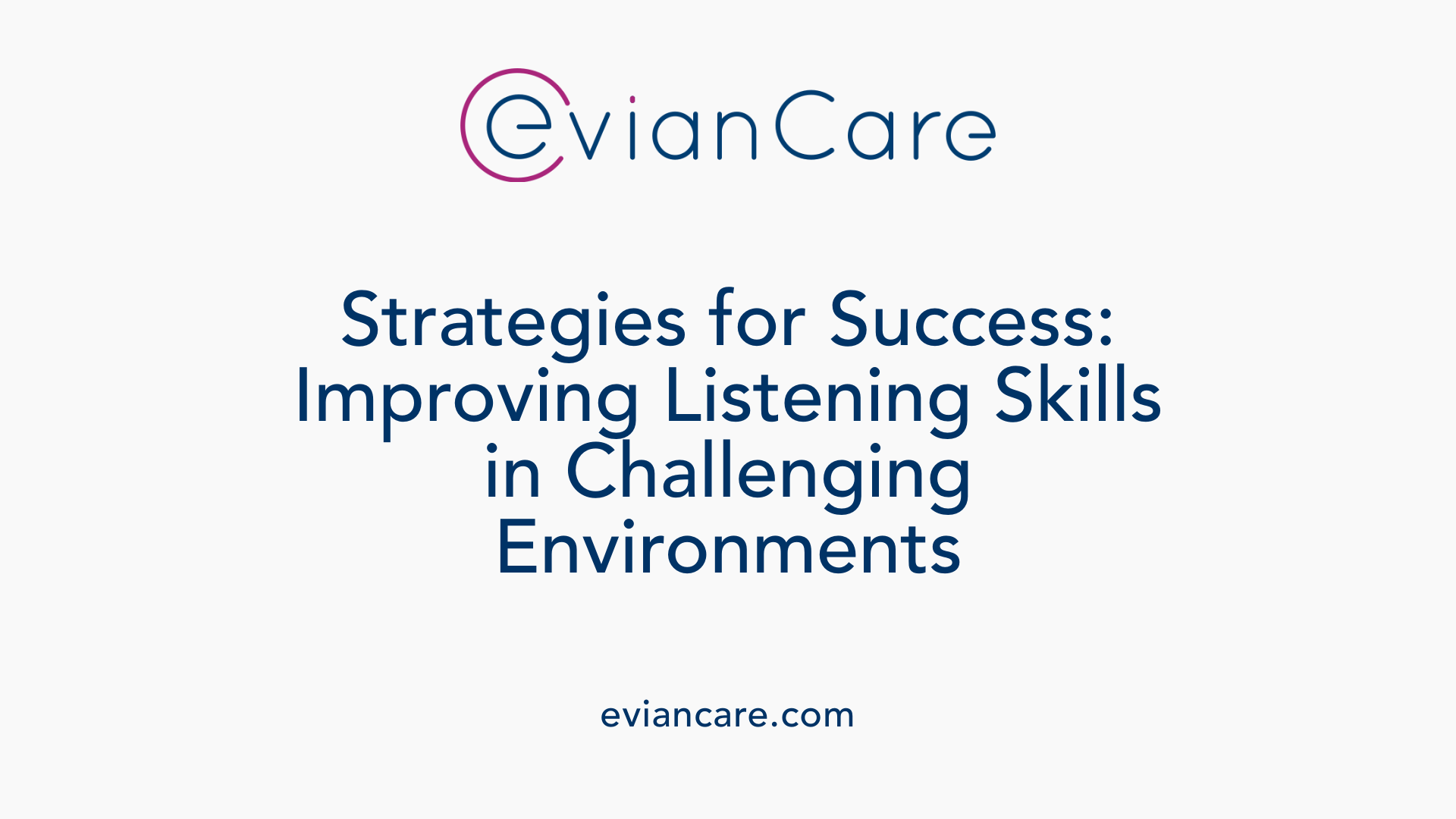
What are effective interventions for strengthening listening skills and comprehension in challenging acoustic environments?
Improving listening skills in noisy settings involves a combination of targeted therapies and environmental adjustments. Auditory training programs are fundamental; they focus on enhancing sound discrimination, speech perception, and processing of complex acoustic signals. For instance, programs that include exercises with background noise exposure help individuals learn to filter extraneous sounds and focus on speech.
Listening therapy options, such as the Safe and Sound Protocol (SSP) and the Focus System, support auditory and neural regulation. SSP, rooted in Polyvagal Theory, shifts the nervous system toward a calmer state, thereby improving communication skills and social engagement. The Focus System offers multisensory input that enhances brain organization, emotional regulation, and speech clarity, ultimately facilitating better listening comprehension.
Environmental modifications are equally crucial. Active strategies like reducing ambient background noise, optimizing room acoustics, and employing assistive technology significantly improve access to speech. Hearing aids, personal FM systems, and Bluetooth devices amplify speech and filter background sounds, making listening more manageable.
Positioning also plays a vital role; staying close to speakers, maintaining eye contact, and choosing quiet locations help minimize auditory challenges. Encouraging active listening—such as asking clarifying questions, using visual cues (like lip-reading), and practicing attentive listening—can further bolster comprehension.
Assessments, both subjective and objective, are used to gauge listening effort and identify specific challenges. Subjective tools include questionnaires on perceived listening difficulty, while objective measures involve tests like the ELFLing and the Developmental Test of Auditory Perception, which evaluate real-world listening abilities.
In the classroom, strategic accommodations make a practical difference. These include preferential seating near the teacher, reducing background noise sources such as fans or appliances, and using assistive listening devices. Teachers can simulate noisy environments during training to help students develop resilience and effective coping strategies.
Research supports the use of intentional auditory training in children with hearing loss. A study by Jessica Sullivan from the University of Washington involved children aged 6-17 in a three-week program that exposed them to speech in noise. Results showed a 50% improvement in speech comprehension in noisy conditions, demonstrating the effectiveness of persistent, structured auditory training.
Overall, combining therapy programs, environmental adjustments, and active listening strategies offers a comprehensive approach to enhancing speech understanding in challenging acoustic environments.
Optimizing Listening Ability in Complex Environments
Effective speech therapy interventions encompass a multifaceted approach, integrating auditory training, technological support, environmental modifications, and cognitive strategies. Tailored programs that address individual needs—ranging from pitch discrimination, spatial localization, to cognitive training—can substantially improve speech perception in noisy environments. Leveraging advances in assistive technology and creating acoustically optimized settings further facilitate better communication. Ongoing assessment and personalized therapy are essential to equip individuals with the skills necessary to navigate complex auditory scenes confidently, ultimately enhancing their social, academic, and professional interactions.
References
- Training Programs for Improving Speech Perception in Noise
- Listening challenges in children: Comprehension and effort ...
- Speech Therapy Activities for Listening Comprehension
- It's a Noisy World! We CAN Improve Listening in Noise Ability
- Tips for Overcoming the Challenges of Listening in Noise...
- A Noisy Classroom Can Help Children with Hearing ...
- Training Programs for Improving Speech Perception in Noise
- Multisensory benefits for speech recognition in noisy ...
- Better Hearing in Noisy Environments | Listening Tips from ...
- Training Programs for Improving Speech Perception in Noise




